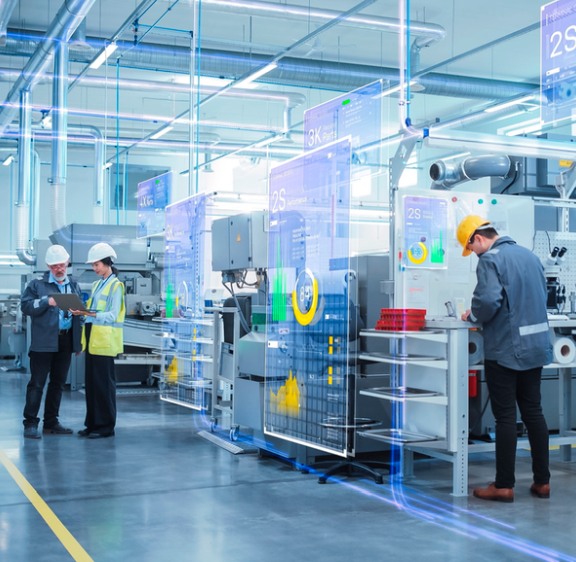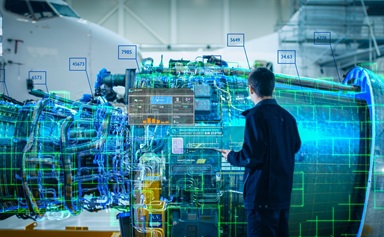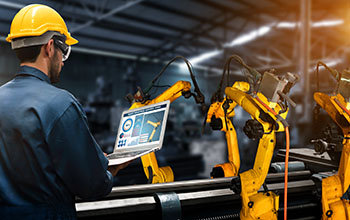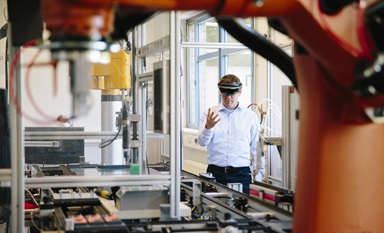The automotive industry is undergoing significant changes caused by climate change and political efforts to curb it, but also by new technologies and changes in buyer preferences. This is leading to a shift away from combustion engines toward electromobility, which is causing significant structural changes at automotive suppliers and manufacturers. It is also associated with high investments in new products and production changes.
Rethinking vehicle system architecture
In addition, a general trend can be observed that is leading to far-reaching changes in the development and design of the automobile, irrespective of the drive principle. According to MHP’s mobility study, digital vehicle features are a decisive purchase criterion for 73% of car buyers.
Autonomous driving, new business models and the ability to carry out updates or maintenance over the air (OTA) will ensure that software plays an increasing role in vehicle value creation. The industry will therefore be talking about software-defined vehicles (SDVs) in the future.
I see SDVs not so much as software-defined but as software-managed vehicles. This includes the operation of the vehicle and the expansion of vehicle functionalities with additional capabilities and features. The core of an SDV is the operation of all vehicle software via a redundant central computer and connection to the car manufacturer’s back-end systems.
SDV means moving away from the current practice of installing proprietary software in every single piece of hardware purchased from a supplier. The software then must be laboriously connected to other proprietary systems from other suppliers. Instead, a central operating system ensures the interaction of all components and functions. The underlying architecture splits the vehicle into a small number of spatial zones. An electronic control unit controls the functions in the respective zone across domains, which means, for example, controlling chassis components and steering. The control units in the zones are in turn connected to the central computer.
SDVs open up new functionalities and sales potential
SDV is the prerequisite for the realization of future functionalities in cars, such as autonomous driving. Analyses of vehicle and driving behavior will lead to improvements in product quality and increased adaptation of cars to customer needs. In addition, new business models will open up for automotive manufacturers (OEMs).
Goldman Sachs forecasts that SDV-induced sales will increase from $315 billion in 2020 to $405 billion in 2030. App stores with offers from OEMs or third parties will become new sources of revenue. These apps are primarily aimed at improving the customer experience in the areas of in-vehicle information and entertainment. The activation of additional functions for a fee, such as a high-beam assistant, generates additional revenue for the OEM. The underlying subscription models lead to continuous revenue for the OEM over the vehicle life cycle.
The life cycle of a vehicle can be extended via OTA function updates. This helps to ensure that a vehicle does not become obsolete as quickly and retains its value better. In addition, OTA updates contribute to lower maintenance costs, as vehicles no longer need to be taken to mechanics for certain maintenance work. Services made possible by the technology, such as preventive maintenance, can also be monetized by OEMs. In the future, the vehicle itself could serve as a means of payment, e.g., for parking fees.
The SDV – the challenge of vehicle development and life-cycle support
These new functions are made possible by sophisticated technologies such as artificial intelligence, machine learning and data analytics. These and the requirement to rethink the vehicle’s system architecture pose major challenges for OEMs.
Whereas vehicle development in the past was more hardware-oriented, SDVs require a paradigm shift to software-oriented development. With personnel and knowledge deficits in this area, OEMs must decide either to partner for software development or build the capabilities in house. The decision to cooperate with hyperscalers such as Google or AWS and other third parties for software development, or invest in their own software expertise varies by automaker. The latter requires investments of several billion euros per year.
While OEMs such as Stellantis or Renault prefer partnerships; BMW, Mercedes-Benz and Volkswagen are focusing on creating their own software development capacities. The latter has advantages when it comes to securing intellectual property and therefore also influences the degree of monetization of apps and services. In addition, valuable software expertise is built up, which is necessary for the provision of continuous updates to the apps and operating system.
Software providers and system integrators such as Eviden can provide useful support to OEMs in building up expertise and developing applications. Despite the focus on software, it is important to ensure that the hardware used is designed for increased performance to be able to process additional applications and update.
Cybersecurity for physical safety and more
The SDV development process spans the entire vehicle life cycle in an expanded ecosystem that includes partners, customers with their vehicles and more internal interfaces. This expansion increases the number of possible points of attack. As a result, the importance of cybersecurity increases significantly.
Nobody wants to imagine outsiders interfering with the steering or brakes of a vehicle. Therefore, the security of all systems must be guaranteed. To this end, cybersecurity in SDVs is based on existing security principles and concepts. As an example, security by design integrates security measures at all levels of software architecture and continuously manages risk.
Care must be taken to ensure that these security principles and concepts are anchored in the development and maintenance processes. This is the only way to ensure that customers benefit from secure, additional applications and services.





